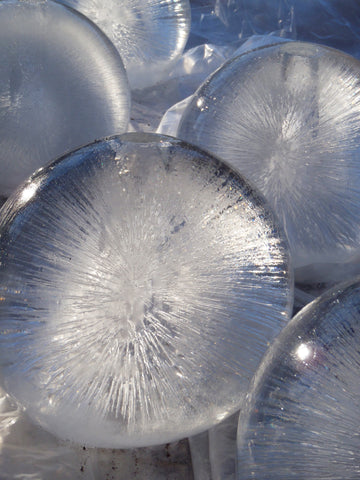
Like us on Facebook | Tag on Instagram: #wintercraftcommunity #wintercraftpics #icewrangler

Through the centuries humans searched for ways to bring light into the darkness of winter. Ice lanterns, in any form, are a beautiful way to do just that. Many cold-weather cultures claim the invention of the ice lantern or ice candle—Finland, Norway, Russia, Germany, China and Japan. The truth is, given their latitudes, they all naturally have traditions surrounding ice as a tool and an art form. The most basic example of this is the boat lantern. To light the way on ancient vessels, ice lanterns were easily created and placed on decks—to see and be seen. As with most tools that hold symbolic meaning, a broom, a scythe, or a wheel, the ice lantern was assimilated into the holidays that dealt with the rebirth of the sun. The Winter Solstice, for example, is still the center point of joy for many who dwell in a cold climate. Great happiness is brought to all by the simplest thing—a dark winter’s night illuminated by a flame as it plays within a shell of ice.
When a container of water is put in freezing temperatures, the water within begins to freeze when it reaches 32°F/0°C. When using a mold, the water toward the outside of the container is in direct contact with the freezing temperatures, so the water will freeze from the outside in. So after the ice lantern partially freezes, removed it from the mold or pop the balloon and the water from the interior will flow out revealing a natural cavity—which is where the candle is placed for lighting.Ice lantern creation is based on the chemical properties of water, which happens to be the only chemical substance that humans regularly use in each of its three phases—water, ice and steam. For our purposes, it is the process of water turning into ice that is the most important.
The lines in the ice? The highly technical term we use for that phenomenon is "SHOOTIES"! The cause of the lines is due to a simple property of water. Pure water freezes first and pushes away impurities. For globe ice lanterns, that would push the impurities toward the center, away from the cold. So when tap water is used, the outside ice will be very clear and the inside of the globe ice lantern will have spikes of mineralised ice traveling toward the center - spectacular! (0°F/-17°C makes for an especially dramatic effect. Colder than that, the ice can be more opaque; warmer makes the water clearer.)
As you can see, it is easy and fun to make breathtakingly beautiful globe ice lanterns with just some very basic chemistry, some experimentation and a little patience.